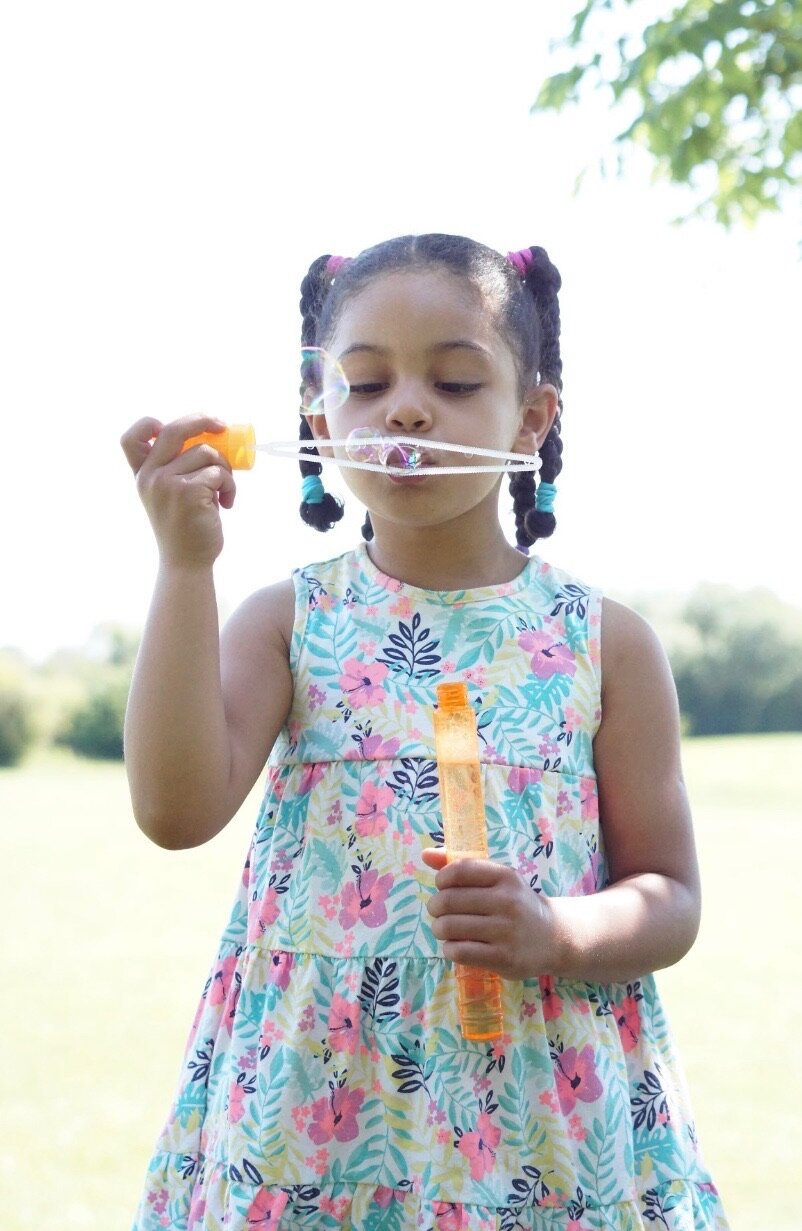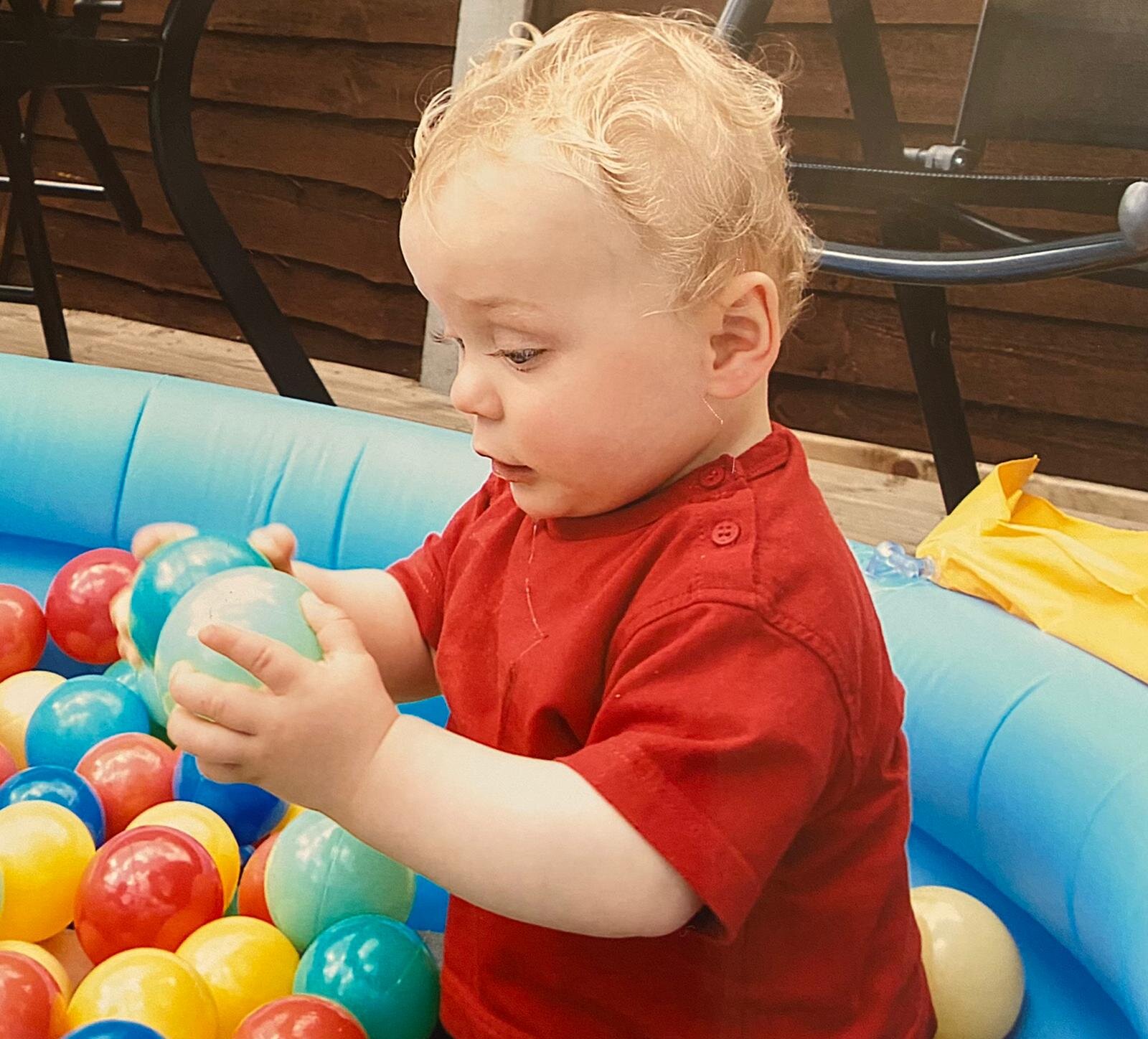Why does my child do the same thing over and over again?
WRITTEN BY CLAIRE BURGESS, FAMILY CONSULTANT
Signs of a trajectory schema?
Does your child twirl round and round and round all the time or, do they always want to line their cars up in a straight line or, perhaps they want to drop or throw things from a height..?! Do you wonder why this might be?
Children are creatures of habit and it’s with good reason! These repetitive behaviours are all part of your child’s essential brain development, helping them to learn new skills and practice what happens when they do them. As babies you will have seen your child repeating an action until they were able to do it, and, as our children get older, these behaviours become more defined as their interests (and their brains) develop.
The official name for these behaviours is Schemas.
Researchers believe that there are 9 different schemas which can be identified in children - there are a number of different names for these, but I have described below the ones which are most commonly referred to. (You might even see your child demonstrating more than one schema at a time!).
Orientation schema?
Trajectory Schema
This is mainly about a child making sense of movement of their own body, movement of an object etc.
What you might see your child doing: You might see your child doing things like waving, pulling, pushing, pointing, climbing, going up and down steps are all part of the trajectory schema.
They can often enjoy things such as throwing food and watching what happens, they may like blowing bubbles, rolling cars down a ramp or playing throwing and catching.
Rotation Schema
This schema is all about things that involve spinning, twisting, rolling or turning objects (or themselves) in circles.
What you might see your child doing: You might see this in your child doing things such as rolling down a hill, spinning in circles, running or riding a bike in circles, watching the washing machine go round or doing action songs such as ring-a-ring-a-roses or round and round the garden.
Enclosing Schema
With this schema you will see your child creating boundaries - building things around objects (walls, fences) or drawing enclosures / circles around other objects on the page. This schema helps children to understand boundaries and eventually leads to the formation of letters such as ‘d’, ‘p’ and ‘o’
What you might see your child doing: Your child might do things like draw faces with eyes, nose and mouth inside it or making an enclosure for their farm animals or toys. They might put a border around their picture or push their food to round the edge of the plate.
Enveloping Schema
In this schema your child is investigating what happens if they hide, or cover / wrap an object or themselves.
What you might see your child doing: If you see your child making dens, dressing up with layers of different clothes, filling bags with different materials or objects, wrapping things up, posting things, playing doctors and nurses with bandages, using glove puppets etc then it is likely that they have an enveloping schema.
Transporting Schema
Children with a transporting schema are always moving objects from place to another. It’s the perfect example of play being a child’s work and they get great satisfaction from completing a task like taking their bricks in a pram to the other side of the room.
What you might see your child doing: You will see your child using their hands, pockets or containers to collect things and unpack them, often placing them in piles. This schema can really be harnessed when you have shopping to unpack or gardening to do - you will have a very willing helper to take the shopping out of bags, put things in the wheelbarrow and deliver to their rightful places!
Connecting Schema
This schema is all about joining things together – this might be objects joined together with ribbon, string or tape or linking arms with people to connect that way. By doing this your child is exploring how things join together and then, moving to the disconnecting schema where things come apart.
Things to encourage this schema: Great toys for these schemas is putting wooden railway tracks together, making paper chains, building and modelling, threading. Just be aware that if your child also has a disconnecting schema, they might be inclined to pull things apart of knock things down once they have been built. This is all OK, but it is about understanding it and making sure that they understand not to knock over or pull apart something that someone else has built.
Positioning Schema
This is where your child likes to position and arrange objects. This is all getting them ready for things like putting things away neatly, creating mathematical patterns or laying the table.
What you might see your child doing: Children with this schema love to line things up in order of size, colour or shape. They might not want to have their food mixing.
Games where they can position you or their friends in a game are good to play with a child who has this schema – perhaps you could pretend to be going to a theatre or cinema and your little one can show you to your allocated seat! Balancing games, noughts and crosses (for older children) and games like Connect 4 are also good for this schema
Orientation Schema
With this schema you will see your child wanting to look at things from different viewpoints such as backwards, lying flat on the floor or seeing things through their legs, or hanging upside down. This is all about learning to see things from another perspective or point of view and is particularly useful in physical games and activities.
Games your child might play: The monkey bars at a park are really popular for this schema, they might want to build ramps to get higher, roll along the floor or climb to stand on a ledge to get a higher view.
Rotating or trajectory schema?
Should I encourage these repetitive behaviours? Absolutely! As I have said in previous blogs, play is the way that children learn. On the other hand, you might notice that when you buy a new toy or suggest an activity, that your child isn’t interested in them at the time. This is because the behaviour or schema that this toy encourages hasn’t developed yet - you might find that they become interested in it at a later stage.
What happens when...? This is the question that our children are asking themselves when practicing these skills, which helps to understand why they do them.
I know that it can feel frustrating when your child is constantly throwing things or spinning round and round in circles (!), but as above, it’s good to encourage them and try to think of ways to channel these interests, for example:
Set up a rolling game to see who can roll their ball closest to the wall, who can get their soft ball into a bucket or introduce toys with wheels to encourage your child’s rotation schema.
Have lots of different items with little fabric bags to sort them into for an enveloping schema.
Finding things that can be safely and easily tied up or sellotaped together for a connecting schema.
The language we use
We also need to think about the way we talk to our children when they are doing these things. For example, rather than discouraging them we should, as above, offer alternatives and use language which encourages the action but directs them in a different direction, for example - “remember that we only throw soft balls” rather than discouraging the throwing of the balls altogether.
Should I be worried if my child doesn’t show any of these schemas in their play?
No, don’t be worried. All children learn through play, but not all children demonstrate schemas in this way, the learning process varies in different children and at different stages.
Where can I find activity ideas to support my child’s schema?
You can find lots of activities to help support your child’s schema behaviour on social media and the internet (@BespokeFamily share an activity every day on social media and lots of them are ideal for this type of play!).
Don’t forget that one particular schema won’t last for ever and you might see a child going through lots of different ones (or none at all!). The important thing is to support this learning however you can - think of it as cultivating your little one’s brain to help them be fully equipped for future challenges and interests. Your little person with a rotation schema could be a racing driver in the making!
Did this pilot have an enclosing schema when he was little perhaps ;-)!
If you are interested in finding out more about schemas as well as some more information and handy hints and tips about play, check out ‘Your guide to play’! For more information - click here
Don’t forget that we offer parent consultations should you need support with anything from sleep to behaviour and so much more! Details of the packages we offer can be found here.
We also have a podcast - ‘Newborn to Teen and Everything in Between’ - listen here.




